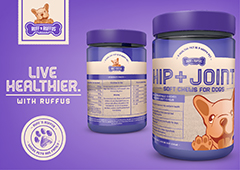Canine Fun In The Sun
Tips for a Pet-Safe Summer
By Dr. Brett Shorenstein, DVM
Summer is made for dogs… and for the people who love them. Whether you’re off on a daytrip to a Dog Beach or just a stroll through the city to get a Pooch-ini at Shake Shack, here are a few tips to help keep your pet protected:

•During the hottest days, you’ll want to exercise your pet when it’s cooler in the morning or evening. You should also know the warning signs of heat exhaustion: excessive panting or drooling, anxious behavior, unsteadiness, and abnormal gum and tongue color. This can quickly advance to heat stroke with vomiting, diarrhea, seizures, and collapse. If your pet exhibits any of these symptoms, you’ll need to call a vet right away.
•Asphalt can be harsh on your pet’s paws, and it doesn’t take extreme temperatures to turn sidewalks and streets into frying pans. An easy way to check is to put your palm where you plan to walk. If it’s too hot for your hand, it’s too hot for your pet.

•You may have heard that sunscreen is a good idea for light-colored or short-haired pets, and for protecting ears and noses. Well, yes and…noses. Sunscreens offer some protection, but watch for zinc oxide and salicylates that your pet can ingest when they lick themselves. Better to limit their time in the direct sun by finding shady spots at the dog run or toting your own shade with a large umbrella.
•Escaping the concrete jungle for a hike at Inwood Hill or in the Hudson Valley? Even if your pet is on a flea and tick preventative, you’ll want to check for these little dudes after being outdoors. Our region of the country is high risk for tick-borne illness, including Lyme disease—and ticks can easily jump from pets to people.

•Not to be a buzzkill if your dog loves to play in the water, but later in the summer, blue-green algae (cyanobacteria) is a danger, as it can kill pets. Never let your pet drink from a lake, pond, or river, and make sure you can identify an algae bloom: foamy, scummy, thick-looking water with greenish or brownish-red cells suspended in the water.
Your favorite vet is a great resource for info about keeping your pet safe in summer, so don’t hesitate to give him or her a call if you have questions. Then go leash up, head out, and have some fun! To learn more about sun protection for your pet, reach out to Dr. Shorenstein at Abington Square Veterinary Clinic, abingdonsquarevet.com











